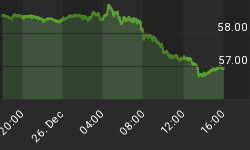One of the few things more troubling for an economy than government intervention is government intervention driven by panic. Time and again, history has shown that when governments rush to engineer solutions to pressing problems, unintended difficulties arise.
In the current crisis, there is growing evidence that Washington is in a state of increasing panic. Despite its massive cash injections, market manipulations and 'rescue' plans, the recession is clearly deepening and spreading. With little to show thus far, politicians don't know if they should redouble past efforts, break ground on new initiatives, or both. However all agree, unfortunately, that the consequences of doing too little far outweigh the consequences of doing too much.
Although there are many parallels between the current crisis and the Crash of 1929, one key difference is the global profile of the U.S. dollar. In 1929, the dollar was on the rise, and would soon eclipse the British Pound Sterling as the world's 'reserve' currency. Furthermore, the American economy was fundamentally so strong that in 1934 America was the only major nation able to maintain a currency tied to gold.
Ever since, the U.S. dollar's privileged 'reserve' status has been a principal factor in America's continued prosperity. The dollar's unassailable position has enabled successive American governments to disguise the vast depletion of America's wealth and to successfully increase U.S. Treasury debt to where the published debt now accounts for some 100 percent of GDP. The total of U.S. Government debt, including IOU's and unfunded programs, now stands at a staggering $50 trillion, or five times GDP! If the dollar were just another currency, this never would have been possible.
In today's crisis however, the dollar is likely making its last star turn as the leading man in the global financial drama. Other stronger, less burdened currencies are waiting in the wings for the old gent to take his final bows.
The dollar's demise is being catalyzed by the neglect of the Federal Government. Instead of enacting policies that would restructure the U.S. economy, and restore productive, non-inflationary wealth creation, Congress is simply financing the old crumbling edifice.
Faced with the growing realization that America is not doing the work necessary to right its economic ship, it will not be long before America's primary creditors begin to seriously question the nation's ability to service, let alone repay, its debts.
There is now the prospect (inconceivable until recently), that America could lose its prestigious 'triple-A' credit rating. In today's risk adverse market, this could cost the Treasury one percent in interest on long bonds. Each additional percentage point of interest would cost America some $10 billion a year on each trillion dollars of new debt, or some $300 billion over the life of a 30-year bond.
Many of the foreign governments who hold huge amounts of U.S. dollar Treasury debt, such as China and Japan, have announced plans to spend money on their own ailing economies. Should these foreign central banks divert to domestic initiatives some of the funds used to buy U.S. Treasuries, serious upward pressure on U.S. interest rates will result. Should they actually sell parts or all of their holdings they will likely put serious downward pressure on the U.S. dollar. Last week, a Chinese official claimed the U.S. dollar should be phased out as the world's 'reserve' currency.
In the short term, as dollar 'carry-trades' continue to be unwound and questions of political will and falling interest rates haunt the Euro and some other currencies, the U.S. dollar may be the recipient of some upward appreciation. But with the American Government appearing increasingly to be in panic mode, a run on the U.S. dollar could develop rapidly into cascading devaluation. Even if no such panic run materializes the long-term outlook for the U.S. dollar is one of high risk and low return. This beckons major upward pressure on precious metals.
For a more in-depth analysis of our financial problems and the inherent dangers they pose for the U.S. economy and U.S. dollar, read Peter Schiff's just released book "The Little Book of Bull Moves in Bear Markets." Click here to order your copy now.
For a look back at how Peter predicted our current problems read the 2007 bestseller "Crash Proof: How to Profit from the Coming Economic Collapse." Click here to order a copy today.
More importantly, don't wait for reality to set in. Protect your wealth and preserve your purchasing power before it's too late. Discover the best way to buy gold at www.goldyoucanfold.com. Download Euro Pacific's free Special Report, "The Powerful Case for Investing in Foreign Securities" at www.researchreportone.com. Subscribe to our free, on-line investment newsletter, "The Global Investor" at http://www.europac.net/newsletter/newsletter.asp.
















